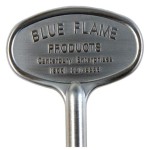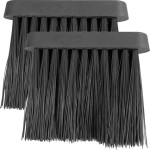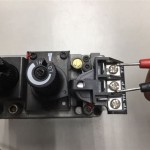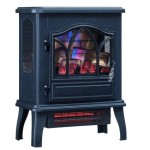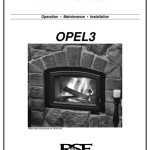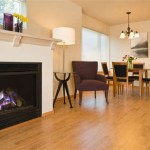Understanding Fireplace Wall Vent Clearance: Guidelines for Safety and Efficiency
Fireplaces offer warmth, ambiance, and a focal point for many homes. However, their proper operation hinges on a crucial element often overlooked: adequate wall vent clearance. This clearance refers to the required space between the fireplace vent and surrounding combustible materials, ensuring safe and efficient exhaust of combustion gases. Failing to adhere to these clearance guidelines can lead to hazardous situations, including fire risks, carbon monoxide poisoning, and reduced fireplace performance. This article delves into the intricacies of fireplace wall vent clearance, exploring the reasons behind its importance, applicable regulations, and best practices for achieving optimal and safe fireplace operation.
The primary function of a fireplace vent is to channel byproducts of combustion, such as smoke, carbon monoxide, and other harmful gases, safely out of the home. These gases are generated during the burning of wood, gas, or other fuels. Without proper venting, these byproducts can accumulate within the living space, posing significant health risks. Carbon monoxide, in particular, is an odorless, colorless gas that can be lethal even in small concentrations. Adequate wall vent clearance ensures that the vent system can operate effectively, drawing these gases away from the home and preventing their buildup.
Furthermore, insufficient clearance can lead to overheating of surrounding combustible materials. Fireplace vents, especially those used for wood-burning fireplaces, can reach high temperatures during operation. If these vents are positioned too close to flammable materials such as wood framing, drywall, or insulation, the prolonged exposure to heat can ignite these materials, resulting in a structural fire. Maintaining the recommended clearance distances minimizes the risk of such fires, protecting both the occupants and the property.
The efficiency of the fireplace itself is also affected by wall vent clearance. Restricted airflow around the vent system can impede the draft, which is the natural upward movement of air that draws combustion gases out of the fireplace. A poor draft can result in smoke spillage back into the room, reduced heating efficiency, and increased creosote buildup within the chimney. Proper clearance allows for unimpeded airflow, promoting a strong and consistent draft that optimizes fireplace performance.
Key Point 1: Identifying and Understanding Clearance Requirements
Clearance requirements for fireplace wall vents are not arbitrary figures; they are based on extensive testing and research conducted by organizations such as Underwriters Laboratories (UL) and the National Fire Protection Association (NFPA). These organizations develop safety standards and codes that are widely adopted by building codes and regulatory bodies. The specific clearance requirements will vary depending on several factors, including the type of fireplace (wood-burning, gas, or electric), the type of vent pipe used, and the construction of the surrounding wall. It is crucial to consult the manufacturer's instructions for the specific fireplace and vent system being installed. These instructions will provide detailed information on the required clearance distances for all sides of the vent, including horizontal and vertical clearances.
For wood-burning fireplaces, clearance requirements are typically more stringent due to the higher temperatures and greater potential for creosote buildup. Gas fireplaces, while generally requiring less clearance than wood-burning models, still necessitate adherence to specific guidelines. Electric fireplaces, which do not produce combustion gases, usually require less clearance, primarily to prevent overheating of the surrounding wall. Understanding the specific type of fireplace and its associated clearance requirements is paramount for ensuring safe and compliant installation.
Building codes also play a significant role in determining fireplace wall vent clearance. Local building codes often reference national standards such as the NFPA 211 (Standard for Chimneys, Fireplaces, Vents, and Solid Fuel-Burning Appliances) and may include additional requirements specific to the local jurisdiction. Before installing a fireplace or modifying an existing vent system, it's essential to consult with the local building department to obtain the necessary permits and ensure compliance with all applicable codes. Failure to adhere to building codes can result in fines, delays, and even the requirement to remove and reinstall the fireplace.
The vent pipe itself influences clearance requirements. Different types of vent pipes, such as single-wall, double-wall, and triple-wall pipes, have varying insulation properties and heat radiation characteristics. Consequently, each type of pipe has different clearance requirements. Double-wall and triple-wall pipes offer better insulation than single-wall pipes, allowing for reduced clearance distances. However, even with these insulated pipes, it's crucial to follow the manufacturer's instructions and local building codes to determine the appropriate clearance. Using the wrong type of vent pipe or disregarding the recommended clearance can compromise the safety and efficiency of the fireplace system.
Key Point 2: Common Mistakes and How to Avoid Them
One of the most common errors in fireplace installation is overlooking or misinterpreting the manufacturer's instructions. These instructions contain critical information regarding clearance requirements, vent pipe installation, and other factors essential for safe and efficient operation. Installers should carefully review the entire manual before beginning the installation process. Paying particular attention to diagrams and illustrations that depict clearance distances is crucial. If any part of the instructions is unclear, consulting with the manufacturer or a qualified professional is advisable.
Another frequent mistake involves using incorrect or incompatible vent pipe components. Vent pipes are specifically designed for use with particular types of fireplaces. Using a vent pipe that is not approved for use with the specific fireplace model can create a significant safety hazard. For example, using a single-wall pipe where a double-wall pipe is required can lead to overheating of the surrounding wall and increase the risk of fire. Always ensure that the vent pipe components are compatible with the fireplace and comply with local building codes. Obtaining professional advice before purchasing vent pipe components can help avoid this costly and potentially dangerous mistake.
Improperly sealing vent pipe joints is another common error that can compromise the effectiveness of the vent system. Gaps or leaks in the vent pipe can allow combustion gases, including carbon monoxide, to escape into the home. These leaks can also reduce the draft, leading to smoke spillage and reduced heating efficiency. Using the appropriate sealant or tape, as specified by the vent pipe manufacturer, is essential for creating airtight seals at all joints. Regularly inspecting the vent pipe for any signs of damage or deterioration is also crucial for maintaining the integrity of the system.
Failing to provide adequate ventilation around the fireplace can also hinder its performance. Fireplaces require a sufficient supply of fresh air to support combustion. Obstructing the air vents or sealing off the area around the fireplace can starve the fire of oxygen, leading to incomplete combustion and increased smoke production. Ensuring that there is adequate ventilation in the room where the fireplace is located is essential for proper operation. In some cases, it may be necessary to install a dedicated air supply to ensure that the fireplace receives sufficient oxygen.
Key Point 3: Best Practices for Ensuring Proper Clearance
The first step in ensuring proper fireplace wall vent clearance is to measure accurately. Use a measuring tape or laser distance measurer to precisely determine the distance between the vent pipe and surrounding combustible materials. Compare these measurements to the manufacturer's specified clearance requirements. Double-check all measurements to ensure accuracy, as even small discrepancies can have significant consequences.
When framing the wall surrounding the fireplace, consider using non-combustible materials such as metal studs or fire-rated gypsum board. These materials offer greater resistance to heat and can help reduce the risk of fire. When using combustible materials like wood framing, ensure that they are spaced sufficiently far from the vent pipe to meet the required clearance distances. Applying a fire-resistant coating to combustible materials can also provide an additional layer of protection.
Regularly inspect the fireplace and vent system for any signs of damage or deterioration. Look for cracks, rust, or corrosion in the vent pipe. Check for loose connections or gaps in the seals. Also, inspect the surrounding wall for any signs of heat damage, such as discoloration or charring. Addressing any issues promptly can prevent them from escalating into more serious problems. A professional inspection by a qualified chimney sweep or fireplace technician is recommended at least once a year.
Maintaining a clean chimney and vent system is crucial for ensuring proper draft and preventing creosote buildup. Creosote is a highly flammable substance that accumulates in chimneys and vent pipes as a result of incomplete combustion of wood. Regular chimney cleaning removes this creosote, reducing the risk of chimney fires. A qualified chimney sweep can perform a thorough inspection and cleaning of the chimney and vent system, ensuring that it is free of obstructions and in good working order.
Finally, consider installing a carbon monoxide detector in the home, especially near the fireplace. Carbon monoxide detectors provide an early warning of dangerous levels of carbon monoxide in the air, allowing occupants to evacuate the premises before exposure becomes fatal. Test the carbon monoxide detector regularly to ensure that it is functioning properly. Replacing the batteries annually is also essential for maintaining its effectiveness.
By understanding the importance of fireplace wall vent clearance, adhering to manufacturer's instructions and building codes, avoiding common mistakes, and implementing best practices for installation and maintenance, homeowners can ensure the safe and efficient operation of their fireplaces, enjoying the warmth and ambiance without compromising their safety and the integrity of their homes.

2024 International Fuel Gas Code Ifgc Chapter 5 Chimneys And Vents 503 8 Venting System Terminal Clearances
Gas Fireplace Venting Explained Heat Glo
Venting

Through The Wall Vent Termination Upcodes
Venting

Fireplace Wall Vent General Q A Chieftalk Forum

Chimney Flue Clearance To Wall Inspecting Hvac Systems Internachi Forum
Free Standing Direct Vent Fireplace Installation And Operation Manual Do Not Discard

Lp Gas Fireplace Direct Vent Technical Question Exterior Inspections Internachi Forum

How To Find The Most Efficient Direct Vent Gas Fireplace For Your Next Project

